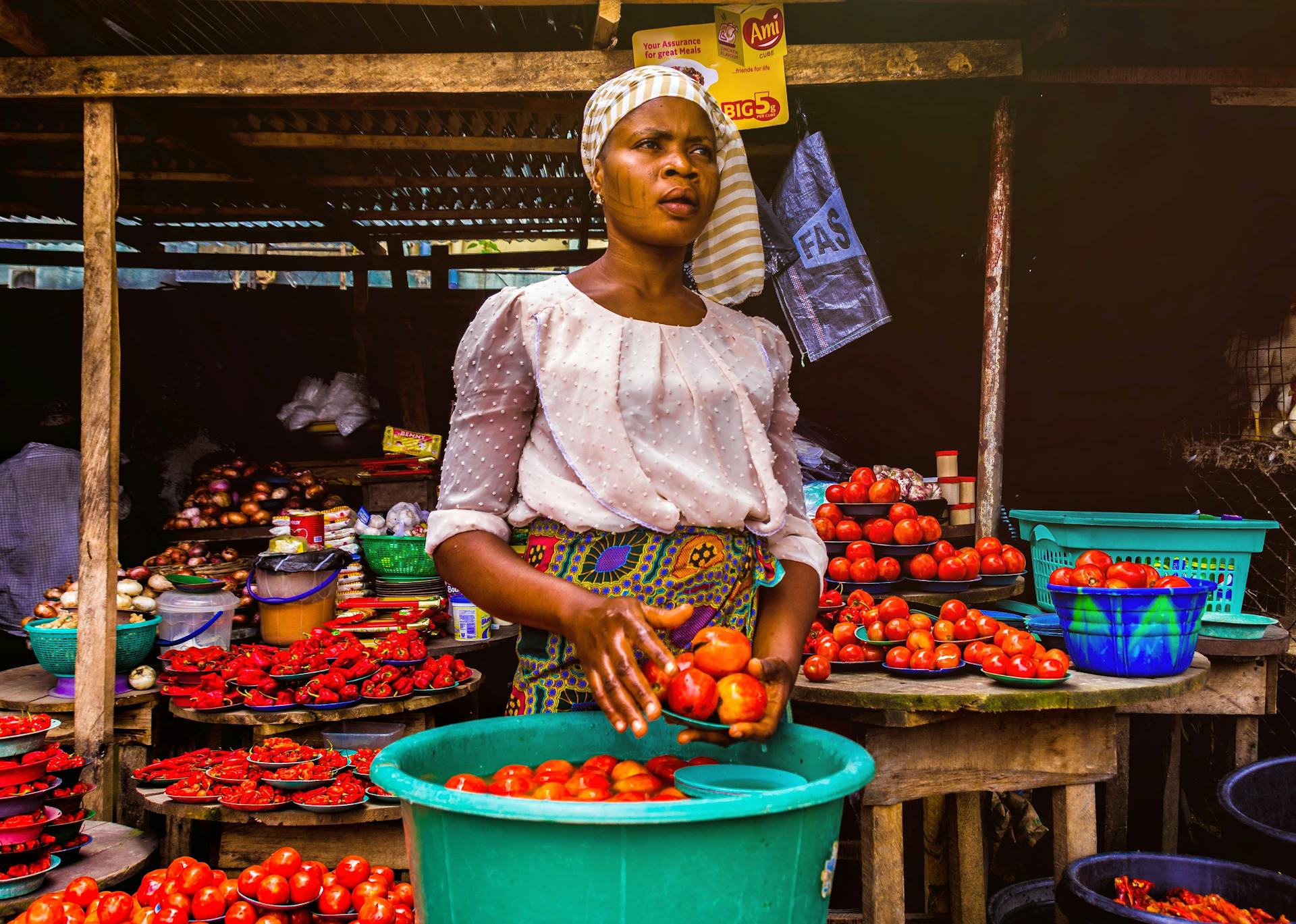
The African Continental Free Trade Area (AfCFTA) is aimed at improving trade and economic development across African countries. However it poses certain challenges to the private sector in some parts of the African countries like in Nigeria.
In Nigeria, the private sector has to cope with several challenges such as poor infrastructure, bad transportation networks and energy supply. This can make it very difficult for Nigerian businesses to participate effectively in the regional trade under AfCFTA. Many businesses also face financial problems.
This essay will discuss the benefits and disadvantages of the AfCFTA especially in relation to African countries such as Nigeria. This essay will also compare the AfCFTA with the European Union. This can help African countries better understand how to navigate and make the best of the free trade agreement.
For a long time, African countries have been in pursuit of economic freedom. Often faced with many crossroads and frequent setbacks, Africa has continually given a resounding call for economic growth and political freedom. There’s a resilient quest for economic and political freedom that ignites the spirit of a continent and Africa is one continent making this quest.
The African Continental Free Trade Area (AfCFTA) represents a great shift and intervention in Africa’s trade and economic landscape. The AfCFTA agreement was designed to promote intra-African trade and economic integration within African countries. Boosting economic growth, as well as fostering political freedom across the continent. However, the challenges of participating in the AfCFTA in African countries must be overcomed.
Africa is struggling and averages just $1200 per capita. Africa has formidable economic obstacles, as evidenced by this average GDP per capita, which is a reflection of the battle against poverty and underdevelopment. Diseases are top causes of death, infant mortality rate, unemployment and power outages are the order of the day. Businesses have few silver linings. All of these are the consequences of a suffering and lagging economy in a continent. Economic inequality, a lack of basic infrastructure, and problems with healthcare can result from epileptic trade and inefficient interchange of commodities and services within a continent. This can hinder development and foster a vicious circle of poverty.
Among the several factors at work are global economic trends, governance issues, and historical legacies.
Causes of Economic Problems which hinders successful trade in African Countries
- Historical effects : Many African nations suffer from weak institutions, poor infrastructure, and restricted human capital development as a result of their long history of colonization, resource exploitation, and systematic injustice.
- Political Instability: In many African nations, political instability, corruption, and problems with governance have impeded economic progress and discouraged investment. Instability in politics has the potential to worsen poverty and inequality, deter foreign investment, and create uncertainty for businesses.
- Economic Structural Challenges: The export of raw commodities, which are prone to price fluctuation in the global market, is a major source of income for many African economies. These economies’ reliance on primary commodities restricts their ability to diversify and industrialize and makes them susceptible to shocks from the outside world.
- Restricted Access to Healthcare and Education: Many Africans continue to face barriers to receiving high-quality healthcare and education. Lack of investment in the development of human capital might limit economic productivity and prolong poverty cycles.
- Infrastructure Deficits: Trade and economic growth throughout the continent are hampered by inadequate ports, energy systems, and roadways. Inadequate infrastructure increases the cost of transportation, impedes the integration of markets, and restricts access to necessary services.
The AfCFTA brief history
The African Continental Free Trade Area (AfCFTA) was created with the signing of the Abuja Treaty in 1991 and the establishment of the African Union (AU) in 2001, the idea gained grounds in the early 2000s.
AfCFTA negotiations officially began in 2015 when the AU Assembly approved the creation of the AfCFTA Negotiating Forum. On March 21, 2018, in Kigali, Rwanda, during the 10th Extraordinary Session of the AU Assembly, the AfCFTA Agreement was formally signed. When the agreement was first signed by 44 AU members, it showed a strong commitment to the trade integration objective.
The AfCFTA needed to be ratified by a minimum of 22 member states of the African Union in order for it to come into effect. In 2019, The Gambia became the 22nd nation to lodge its instrument of ratification, marking the achievement of this milestone. As at February 2024, Nigeria became one of the 54 countries that ratified the AfCFTA agreement.
The African Continental Free Trade Area (AfCFTA) seeks to establish a combined market for products and services. This way there can be ease the flow of products, and people, economic diversification, industrial growth, competitiveness, support for entrepreneurs, and sustainable development throughout Africa.
In order to put the AfCFTA into effect, particular protocols was adopted by the administrative organization in charge of organizing and overseeing the agreement’s implementation, the AfCFTA Secretariat in Ghana.
The AfCFTA has many potential benefits for Africa’s economic progress and prosperity, but it also has disadvantages. To successfully execute and realize the goals of the AfCFTA, African governments, regional organizations, private sectors, and other stakeholders will need to work together to address the obstacles.
Benefits of the AfCFTA
Reduction or Removal of trade barriers
One benefit of the AfCFTA is that it makes it easier to reduce trade barriers like tariffs and quotas on exports and imports. A unified trade system eliminates this, promoting the integration of African countries and African economies.
Intra-African Commerce Growth
Free trade can help African countries diversify and become less reliant on traditional commodity exports. Creating new markets and encouraging the expansion of value-added companies which could help countries become less vulnerable to outside shifts in commodity prices.
The AfCFTA can also bring about the growth of intra-African commerce as well as the growth of larger, markets for goods and services.
Development of niches and specialization for different Countries.
In addition to creating new markets and increasing competition, unrestricted commerce also fosters efficiency and specialization. For instance, Nigeria can decide to focus on the production of cassava as their niche. Considering the abundance of this in the country, Nigeria can decide to focus on the production of this commodity thereby taking over the market for it and developing an advantage over other countries. This could improve the company’s economy. Increased investment and job generation are other benefits of the AfCFTA.
Free trade agreements can encourage collaboration and regional integration among African nations, resulting in stronger infrastructure and commercial links.
Disadvantages of the AfCFTA
Free trade presents certain difficulties. In African societies, free trade may present challenges for the following reasons:
Economic Disparities: The economic growth of several African countries varies, with some having more developed infrastructure and industries than others. Unrestricted trade may make these differences worse by allowing larger economies to dominate the market while weaker ones find it more difficult to compete.
Dependency on Imports: The AfCFTA may result in a greater reliance on imported goods, which may have a detrimental effect on regional industry and impede initiatives to strengthen homegrown manufacturing capacity. African economies may become more susceptible to outside volatility in prices and taxes as a result of their reliance on imports.
When businesses put profits ahead of environmental preservation, unrestricted trade can result in the unsustainable exploitation of natural resources and environmental damage. Long-term negative effects on biodiversity, ecosystem services, and local communities’ livelihoods that depend on natural resources for survival may result from this.
Fragile Regulatory Structures: For the purpose of efficiently managing and supervising trade activities, many African nations lack good regulatory frameworks and institutional support. This may lead to problems like tax evasion, smuggling, and the spread of fake goods, all of which compromise market integrity and impede economic growth.
A balanced strategy that weighs the advantages of trade liberalization against the need to defend regional businesses, encourage sustainable development, and preserve cultural and environmental resources is needed to address these issues.
Africa can take a cue from the European Union and how they navigated their problems with free international trade.
Learning from the EU
The European Union (EU) prior to its trade liberalization was molded by several decades of political, economic, and social changes throughout Europe.
Founded in the years following World War II, the European Union leaders sort for measures to avert future hostilities and encourage economic cooperation among their continent just like the AfCFTA.
In the 1990s and the first part of the 2000s, the EU greatly increased the number of its members by adding a number of nations from Central and Eastern Europe.
These events prepared the way for the EU’s economic unification and the creation of a single market before it opened up for trade. The foundation of EU trade policy brought on the idea of external traders to participate in global trade. The EU overcame a number of internal and external obstacles similar to the African free trade challenges in order to maintain the bloc’s efficacy and unity.
Comparing the challenges and growth of the EU with AfCFTA
- Completing the Internal Market: The AfCFTA needed to enable the free flow of capital, people, products, and services across member states, legislation and unified standards. Just as the EU, the differences in taxes, laws, and administrative barriers were removed to overcome this challenge. However , as the number of EU member states increased and the reach of its policies broadened, the institutional structure of the EU had to be continuously adjusted. The AfCFTA can take a cue from this to adjust its policies to ensure that all countries bound by the agreement benefit entirely.
- Reforming organizations like the European Parliament, the European Commission, and the Economic discrepancies: The cohesiveness and unity of the European Union were challenged by the economic discrepancies among its member nations. In order to lessen regional disparities and guarantee balanced development throughout the EU, the parliament was reformed. The AfCFTA can reform its policies and governing body laws.
- Brexit: One of the major disadvantages to the EU’s expansion was Brexit — the United Kingdom’s (UK) decision to leave the European Union (EU). Brexit presented several difficulties for both the EU and the UK.
The negotiation of a new trade agreement between the UK and the EU presented a big obstacle. Commerce barriers like tariffs and customs checks had to be reinstalled as a result of the UK’s exit from the EU’s single market and customs union. This had an impact on companies who depend on seamless commerce between the UK and the EU. It took a lot of effort and time to negotiate a comprehensive trade agreement that reduced these barriers and guaranteed compliance with the regulatory standards of both parties.
AfCFTA can break free from Divergence in regulations as this by helping all countries who ratified the agreement to overcome the difficulties in adjusting to new laws and regulations and managing shifts in market access.
In order to overcome these obstacles, just like the EU, the AfCFTA members must collaborate, negotiate, and communicate constantly. The AfCFTA must also demonstrate strong leadership and a dedication to the tenets of African trade integration.
The main negotiator on behalf of the EU was the European Commission, who represented the interests of all EU members. The AfCFTA Secretariat which serves as the governing body for the trade agreement must represent the interest of all the African trade union members. Maintaining cohesion among EU member states has been essential to maintaining the EU’s strong and constant negotiating stance. This can also maintain the AfCFTA negotiating stance.
The free movement of capital, people, products, and services is one of the four fundamental freedoms that both the EU and the AfCFTA have to continuously stress, as is the unity of its single market.
Overcoming challenges paved the way for the EU to become a dominant force in global trade and a front-runner in the promotion of free, rules-based economic relations.
It will take diversified strategies such as this, as well as integrating national and international initiatives to address the problems of the African continental free trade Agreement too. It is imperative for Africa to invest in sustainable economic development, healthcare, and education. Furthermore, encouraging accountability, openness, and good governance can aid in establishing an atmosphere that supports development and progress.
African continental free trade area (AfCFTA) can also be improved through:
- Infrastructure Development: By improving ports, roads, trains, and digital connectivity, among other infrastructure elements, the flow of products and services across international borders can be facilitated, lowering expenses and trade obstacles.
Streamlining customs and border procedures can speed up the clearance of goods and facilitate more seamless cross-border trade. This includes harmonizing trade regulations and cutting down on paperwork. - Trade Facilitation: The efficiency and transparency of trade processes which can be increased by putting in place trade facilitation measures include streamlined customs procedures, standardized documentation, and single windows for trade clearance.
- Coordination of External Relations and Trade Policy: In order to present a united front in international trade discussions, member states of the AfCFTA have to coordinate their external relations and trade policies.
- Global Competition and Protectionism: Other trading blocs and significant economies poses a threat to the AfCFTA in the global economy. However, a necessitated and calculated strategy to protect the AfCFTA economic interests while respecting multilateralism and free trade principles should be created.
- Economic Diversification: Promoting industrialization and economic diversification can assist African nations in creating competitive industries and goods, increasing intra-African commerce and lowering their dependency on imports from other continents.
- Investment in Human Capital: By funding entrepreneurship, education, and skill development, African companies will be better equipped to engage in regional trade and seize market opportunities inside the AfCFTA.
- Support for Small and Medium-Sized Enterprises (SMEs): Providing SMEs with financial resources, market intelligence, and technical support can enable them to grow their international commerce and integrate into local value chains.
- Building Institutional Capacity: Increasing the institutional capacity of organizations and agencies concerned with trade at the national and regional levels can enhance enforcement procedures, governance, and legal frameworks, all of which promote a trade-friendly atmosphere.
- Cross-border Infrastructure Projects: Encouraging cross-border infrastructure projects can improve connection and ease trade between African nations. Examples of these projects include electricity grids, transportation corridors, and telecommunications networks. Improving the coordination and harmonization of trade laws and policies across African nations can lower trade obstacles and foster a more seamless trading environment inside the AfCFTA.
- Supporting private sector partnerships: Supporting the private sector contributes resources and experience to infrastructure projects linked to trade, capacity building programs, and investment promotion efforts throughout the continent.
African nations can successfully cooperate to fully realize the benefits of the AfCFTA and open doors for the continent’s sustained economic growth, employment creation, and poverty alleviation.
Conclusion
The world has had a wrong orientation towards Africa for a long time; the thought that Africa has a preference for interactions between governments or between formal institutions as opposed to between decentralized groups. It is expedient to note that although Africa may be experiencing the opposite because of bad governance, Africans believe that the most vibrant, authentic and economically significant interactions are between individuals and decentralized groups in the continent .
Decentralized groups are frequently more responsive to the local environment, and they have a better grasp of the issues and problems that their communities are facing. They’re also more creative and adaptable in finding solutions. These decentralized groups can take many different forms, such as small-scale entrepreneurship, informal networks that flourish outside of official institutions, and grassroots community efforts.
Africa runs the risk of undervaluing these decentralized organizations and voices. This is one of the challenges of the African Continental Free Trade Area (AfCFTA). In ways that supposedly big approaches frequently find difficult to accomplish, decentralized groups are able to propel major social and economic change at the local level, supporting sustainable development and empowering entrepreneurs to national level.
Additionally, exchanges between people and decentralized groups can develop mutual respect, trust, and cross-cultural understanding, which aids establishing long-term alliances, successful trade, and initiatives for sustainable development.
Solving the problems with African free trade through engaging decentralized groups, can help resolve the long-aged problems of economic stagnation, lack of jobs and lack of economic opportunities. It will take coordinated efforts from governments, decentralized groups, international organizations, civil societies, and the private sector to achieve this.
Oluwaponmile Orija Shittu (send her mail) was a writing fellow with African liberty and is responsible for several published articles about economic freedom. She is the author of the literature book ‘The rough path.’
DISCLAIMER: “The views expressed on ileeghana.org are not necessarily those of Institute for Liberty and Economic Education (ILEE)”.





